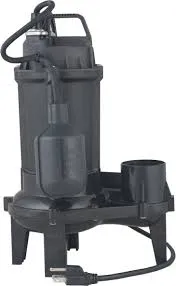English
- Afrikaans
- Albanian
- Amharic
- Arabic
- Armenian
- Azerbaijani
- Basque
- Belarusian
- Bengali
- Bosnian
- Bulgarian
- Catalan
- Cebuano
- Corsican
- Croatian
- Czech
- Danish
- Dutch
- English
- Esperanto
- Estonian
- Finnish
- French
- Frisian
- Galician
- Georgian
- German
- Greek
- Gujarati
- Haitian Creole
- hausa
- hawaiian
- Hebrew
- Hindi
- Miao
- Hungarian
- Icelandic
- igbo
- Indonesian
- irish
- Italian
- Japanese
- Javanese
- Kannada
- kazakh
- Khmer
- Rwandese
- Korean
- Kurdish
- Kyrgyz
- Lao
- Latin
- Latvian
- Lithuanian
- Luxembourgish
- Macedonian
- Malgashi
- Malay
- Malayalam
- Maltese
- Maori
- Marathi
- Mongolian
- Myanmar
- Nepali
- Norwegian
- Norwegian
- Occitan
- Pashto
- Persian
- Polish
- Portuguese
- Punjabi
- Romanian
- Russian
- Samoan
- Scottish Gaelic
- Serbian
- Sesotho
- Shona
- Sindhi
- Sinhala
- Slovak
- Slovenian
- Somali
- Spanish
- Sundanese
- Swahili
- Swedish
- Tagalog
- Tajik
- Tamil
- Tatar
- Telugu
- Thai
- Turkish
- Turkmen
- Ukrainian
- Urdu
- Uighur
- Uzbek
- Vietnamese
- Welsh
- Bantu
- Yiddish
- Yoruba
- Zulu
Telephone: +86 13120555503
Email: frank@cypump.com
Aug . 12, 2024 12:32 Back to list
Understanding the Role of Sump Pumps in Septic System Maintenance and Efficiency Improvements
Understanding Septic System Sump Pumps A Comprehensive Guide
Septic systems are essential for managing wastewater in areas not connected to municipal sewer systems. One critical component that may be overlooked is the sump pump. This article delves into the role of sump pumps in septic systems, their functions, and maintenance tips to ensure efficient operation.
What is a Sump Pump?
A sump pump is a submersible pump used to remove accumulated water from a sump basin, typically located in the basement of a home or near septic tanks. In the context of septic systems, a sump pump plays a crucial role in managing excess water and preventing flooding, which could compromise the overall effectiveness of the septic system.
The Role of Sump Pumps in Septic Systems
In many cases, septic systems can encounter issues with groundwater infiltration, especially during heavy rains or snowmelt. This influx of groundwater can lead to elevated water levels in the septic tank or drain field, posing a risk to the entire system's functionality. Here, the sump pump comes into play.
By extracting excess water, sump pumps help to maintain the necessary balance within the septic tank, ensuring that the wastewater treatment process functions effectively. Without a sump pump, homeowners may find themselves facing issues such as sewage backup, system overload, or even costly repairs to their septic systems.
Key Functions of Sump Pumps
1. Water Removal The primary function of a sump pump is to eliminate excess water from areas around the septic system. This is crucial for maintaining the water table and preventing overload on the septic system.
2. Protection Against Flooding In regions prone to flooding or high water table levels, sump pumps protect septic systems from excess water, reducing the risk of backups and the potential for septic system failure.
septic system sump pump

Maintenance Tips for Sump Pumps
To ensure that a sump pump operates effectively within a septic system, routine maintenance is essential. Here are some helpful tips
1. Regular Inspections Homeowners should periodically inspect their sump pumps for signs of wear and tear. Check for rust, cracks, or any malfunctioning components.
2. Test the Pump Regularly test the sump pump by pouring water into the sump basin. The pump should activate and effectively remove the water from the basin.
3. Clean the Basin Over time, debris can accumulate in the sump basin, leading to clogs and reduced efficiency. Clean the basin and remove any obstructions to ensure smooth operation.
4. Check the Power Source Ensure the sump pump is connected to a reliable power source. Consider installing a backup power system or a generator in case of power outages, especially in flood-prone areas.
5. Professional Maintenance Engage a professional for an annual inspection and maintenance service. A qualified technician can identify potential issues and perform necessary repairs or replacements.
Conclusion
In conclusion, sump pumps are integral to the health and functionality of septic systems. By effectively managing excess water, they prevent flooding, protect septic systems from damage, and ensure a more prolonged and efficient operation. Homeowners should prioritize the maintenance of their sump pumps to enjoy the benefits of a well-functioning septic system and avoid unexpected issues.
-
ISG Series Vertical Pipeline Pump - Chi Yuan Pumps Co., LTD.|High Efficiency, Energy Conservation, Low Noise
NewsJul.29,2025
-
ISG Series Vertical Pipeline Pump-Chi Yuan Pumps Co., LTD.|High Efficiency&Energy-Saving
NewsJul.29,2025
-
ISG Series Vertical Pipeline Pump - Chi Yuan Pumps Co., LTD. | High Efficiency, Energy-Saving
NewsJul.29,2025
-
ISG Series Pipeline Pump - Chi Yuan Pumps | High Efficiency, Low Noise
NewsJul.29,2025
-
High-Efficiency Vertical Slurry Pumps for Mining & Industry Solutions
NewsJul.29,2025
-
High-Efficiency Pipeline Pump Solutions for Every Pipeline Pump Station
NewsJul.29,2025










